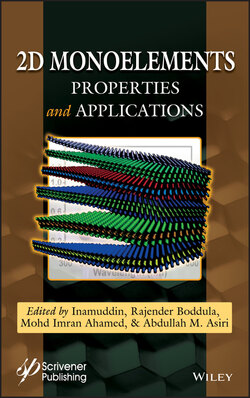Читать книгу 2D Monoelements - Группа авторов - Страница 27
1.3.1.1 Light Exposure
ОглавлениеIn phosphorene, the ambient degradation in the atmosphere is divided into three stages. In the first stage, the reaction induced by the ambient light O2 leads to the formation of oxygen. In that case, the reaction expressing the transfer if charge is given by: where P corresponds to phosphorene and h+ is a hole with positive charge. In the second stage, the oxygen molecule is separated at the surface leading to the following: . Finally, in the last step that is a hydrogen-bond interaction, the P atom is removed from the surface and the bonded O is absorbed by water molecules. It follows that the top layer of phosphorene is broken and excitons can be produced under ambient light.
To evaluate the evolution of BP degradation for various light’s wavelengths and at different time scales, six representative BP flakes were studied individually. Using atomic force microscopy (AFM), the exposures were evaluated in a dark room at six values of wavelengths ranging from 280 to 1,050 nm and imaged before and after identical exposure durations varying from 30 to 120 min with a step of 30 min [65]. The maximum degradation was observed for the UV light (280 nm), then for the blue one (455 nm). In contrast, phosphorene does not show any degradation for green, red, and infrared light, namely, 565, 660, 850, and 1,050 nm. Consequently, the UV light is the predominant contributor to the degradation of BP.
In addition, the engineering of the phosphorene’s band gap renders this material a good candidate for a photodetector, with a large spectral response ranging from the UV towards IR region. For instance, phosphorene photon detector shows a very fast response of 1.82 A/W in the presence of visible light irradiation of 550 nm. With photon energy and a bias of 0.1 V, the photoresponsivity attains the value of 175 A/W in the NIR regime, and at a higher bias of 3 V, it reaches 9×104 A/W offering phosphorene potential as a UV detector [66].
